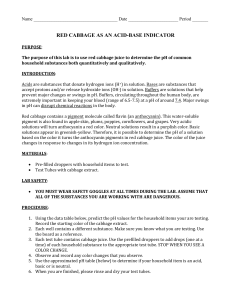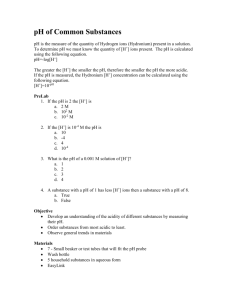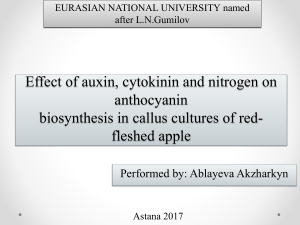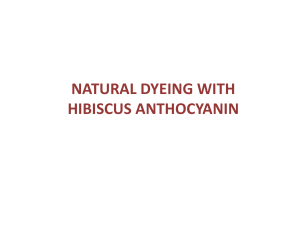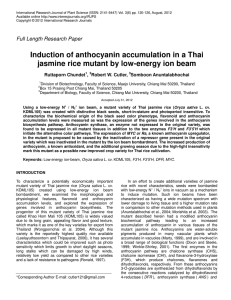Lab: Household Substances—Acid or Base?—Datasheet
advertisement
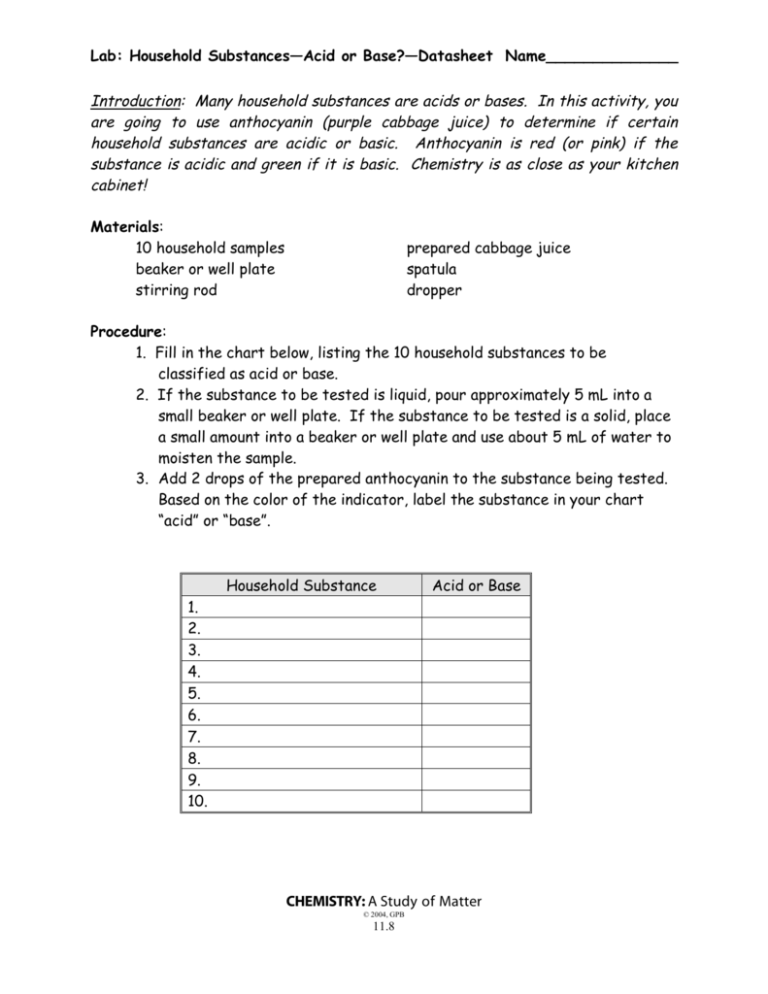
Lab: Household Substances—Acid or Base?—Datasheet Name______________ Introduction: Many household substances are acids or bases. In this activity, you are going to use anthocyanin (purple cabbage juice) to determine if certain household substances are acidic or basic. Anthocyanin is red (or pink) if the substance is acidic and green if it is basic. Chemistry is as close as your kitchen cabinet! Materials: 10 household samples beaker or well plate stirring rod prepared cabbage juice spatula dropper Procedure: 1. Fill in the chart below, listing the 10 household substances to be classified as acid or base. 2. If the substance to be tested is liquid, pour approximately 5 mL into a small beaker or well plate. If the substance to be tested is a solid, place a small amount into a beaker or well plate and use about 5 mL of water to moisten the sample. 3. Add 2 drops of the prepared anthocyanin to the substance being tested. Based on the color of the indicator, label the substance in your chart “acid” or “base”. Household Substance Acid or Base 1. 2. 3. 4. 5. 6. 7. 8. 9. 10. CHEMISTRY: A Study of Matter © 2004, GPB 11.8 Conclusion: 1. 2. 3. Anthocyanin turns _______________ in an acid and _______________ in a base. Substances that change color depending on the pH of a solution are called ________________. According to the data collected, most cleaning products are (acidic, basic). According to the data collected, most food products are (acidic, basic). Fun facts: • Stomach acid is 0.001 M HCl. A normal adult produces two to three liters of HCl every day! • The reason bases feel “slippery” is because your skin dissolves a little bit when you touch them. Yuck! CHEMISTRY: A Study of Matter © 2004, GPB 11.9

